Blanche Ames
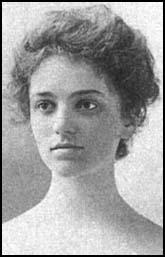
Blanche Ames was born in Lowell, Massachusetts on 18th February, 1878. Her father was General Adelbert Ames, a union officer during the American Civil War, and later, Governor of Mississippi. Her mother, Blanche Butler, was the daughter of Benjamin Butler, the Governor of Massachusetts and unsuccessful presidential candidate in 1884 against Grover Cleveland. (1)
Ames was later one of few women of her time to attend college, earning a B.A. in Art History and a diploma in Studio Art from Smith College in 1899. As class president, she delivered a commencement speech in which she observed that the graduates were "most fortunate to live in an age that - more than any other - makes it possible for women to attain the best and truest development in life" At this time she met Oakes Ames (unrelated) who taught botany at Harvard University. He began courting her with gifts of "the queerest orchids". (2)
In 1900 Blanche married Oakes Ames. Over the next ten years they had four children. In 1910, they designed and constructed an impressive stone mansion located in North Easton, Massachusetts. The house was surrounded by 1500 acres called Borderland which the family farmed. They were Unitarians who belonged to the Unity Church of North Easton. According to Heather Miller "Their marriage was a highly successful collaboration in home and family building, art, science, technology and politics." (3)
Blanche Ames worked closely with her husband's work and she illustrated all seven volumes of his Orchidaceae: Illustrations and Studies of the Family Orchidaceae (1901-1922). It has been claimed by Laura J. Snyder: "Blanche Ames... was soon renowned as the foremost American botanical illustrator of the age. Using the microscope and another optical device, a camera lucida, she captured the intricate form of orchids: the delicate root hairs and rhizomes, the anther cap perched over the pollen bundles, the succulent pseudobulbs. Thanks to dark shadowing and crosshatch highlights, her elegant pen-and-ink drawings boldly depict the plants against the white page. They are at once scientifically exact and artistically brilliant." (4)
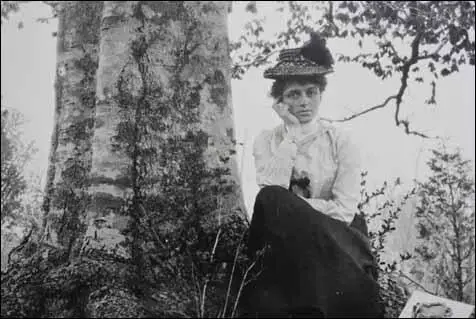
Ames was a strong supporter of women's suffrage and was a member of the the Massachusetts Suffrage Association. Her grandfather, Benjamin Butler, was one of the first American politicians to argue that women should be given the vote. Both of her parents were also advocates of women's rights, so much so that, while promising to love and honor each other in their wedding vows, they deleted the traditional pledge of the bride to obey. (5)
In 1912 Blanche Ames joined Nina Allender and Lou Rogers in producing cartoons for the cause. "The three of them began to turn things around with their political cartoons that were witty, sharp, and attacking the power that was trying to silence them. This new and modern-day women that was being depicted as the Allender girl, showed a spirit of daring and pride as well as possessing youth. " (6)
As Holly Bass has pointed out: "The women's suffrage movement had a serious image problem at the turn of the century, when female activists were often portrayed as obsessed feminists out to destroy American society. From 1912-15, three women artists - Annie Lucasta "Lou" Rogers, Nina Allender, and Blanche Ames - helped turn things around with political cartoons that were sharp, witty attacks on the powers that be. These works also stand as some of the first realistic representations of the 'new woman' in the popular media." (7)
Blanche Ames political cartoons in favour of women's suffrage appeared in the Boston Evening Transcript. She also became art editor for the Woman's Journal. Established by the American Woman Suffrage Association it was edited by Lucy Stone, Mary Livermore and Julia Ward Howe and featured articles by members of the organization and cartoons were provided by Blanche Ames, Lou Rogers, John Sloan, Mary Sigsbee, Fredrikke Palmer, John Bengough, John Bengough and Rollin Kirby. (8)
One of her most powerful cartoons was Double the Power of the Home - Two Good Votes are Better Than One that was published in October, 1915. A young "angelic-faced" woman sits with her three children in a domestic scene. She is surrounded by symbols of her hard work and virtue, suggesting that it was wrong that she was being denied the vote. (9)
In another cartoon published in the Boston Evening Transcript (November, 1915) called The Next Rung, she attempts to capture the struggle faced by women. " The woman is being pushed down by two demons that are trying to keep her from reaching the top of the ladder, and true progress. The demons - Injustice and Prejudice - are just some of the troubles that this woman has to overcome to get the right to vote. You can see that Injustice is blind-folded, showing how Blanche felt that injustice is blind, it only sees half of the story. Blanche's cartoons were drawn to make you think... This woman has already overcome so much greed and ignorance, but now she faces more challenges. She is using her education to help her, but she is still a long way away from the top rung, and must keep climbing. She has come too far to turn back now. This was Blanche's message, this was her hope, and thanks to determined suffragists like Blanche and her contemporaries, women now have a vote, now have true democracy." (10)
Ames was "the first public exponent of birth control in Massachusetts". (11) She argued it was a woman's right to limit her family and in 1916 she became co-founder and president of the Massachusetts Birth Control League, that was affiliated with the national group led by Margaret Sanger. She was highly critical of the Catholic Church and in an article in the Birth Control Review she wrote: "The long arm of the Catholic Church is reaching into our legislative halls and is directing our legislators to act according to its will… We have all been troubled by the fear that this Catholic threat to our free institutions would materialize if Catholics were given positions of power in our government, but never before in so short a time have events developed in such irrefutable sequence as in this case of opposition to the Doctors' Birth Control Bill." (12) Birth control did not become legally available in Massachusetts until 1966. (13)
It has been pointed out that she was a strange mixture of progressive and conservative: "When the ban on dissemination of birth control information was upheld, Ames reacted by suggesting that women take the matter into their own hands. She encouraged mothers to teach birth control methods to their daughters. To help them, she created formulas for spermicidal jellies and provided instructions on how to make a diaphragm by using such everyday objects as a baby's teething ring. Ames' involvement with the Birth Control League of Massachusetts came to an end, however, when she quit in outrage at a fundraising advertisement for the league. In the advertisement, the League used the fact that 250,000 babies had been born that year to families on welfare to persuade taxpayers to support birth control." (14)
In 1941 Ames became President of the New England Women's Hospital for Women and Children and, in a day when women physicians were a subject of controversy, she fought to have the hospital staffed "entirely by women doctors." (15) Its purpose was to offer same sex medical care to women. In 1952 due to financial difficulties, the board of directors opened itself to the possibility of hiring male staff. "Ames vigorously fought to maintain the hospital's almost 100 year old charter. In 1952, as president of the board, Ames successfully spearheaded a massive fundraising effort which raised sufficient funds to ensure an exclusively female staff and administration for the hospital." (16)
At the age of 80, Ames wrote the biography of her father, General Adelbert Ames, entitled Adelbert Ames: Broken Oaths and Reconstruction in Mississippi, 1853-1933 (1964). The biography was prompted by her anger at a suggestion by John F. Kennedy in his book, Profiles in Courage (1955) that her father was a carpetbagger politician in Mississippi. (17)
Ames remained energetic throughout her life. Her daughter attempted to capture her mother in a fine epigram: "For her to have an idea was to act." (18)
Blanche Ames died at the age of 91 on 2nd March, 1969. (19)
The Life and Times of Blanche Ames (YouTube)
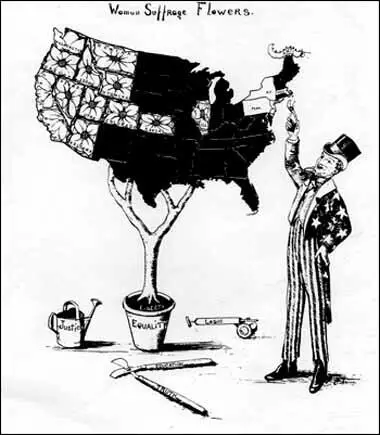
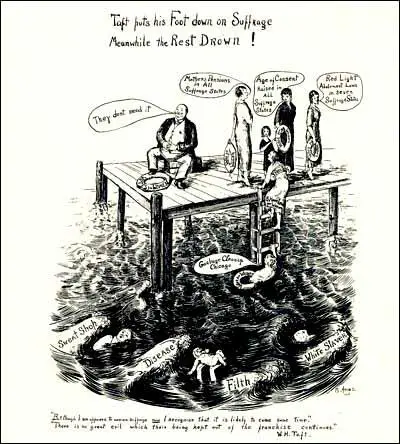
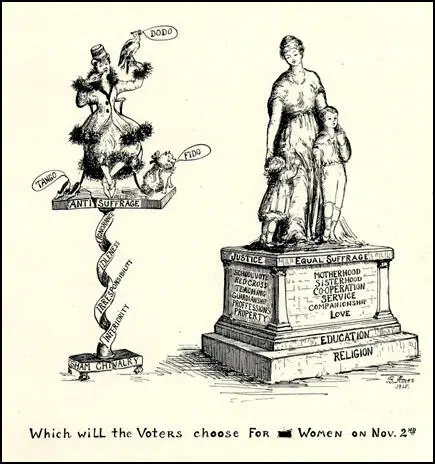
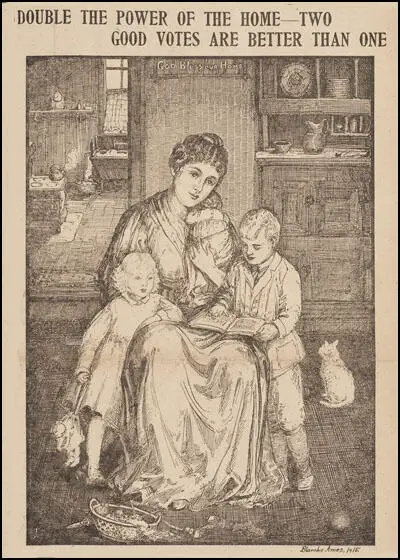
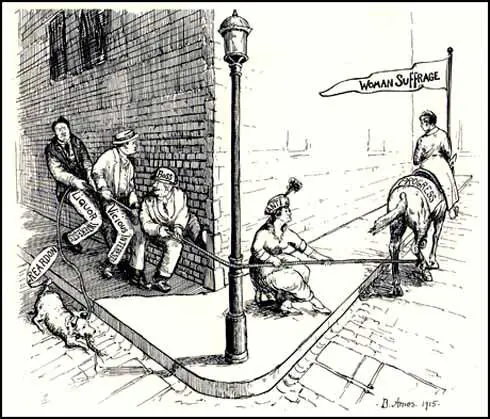
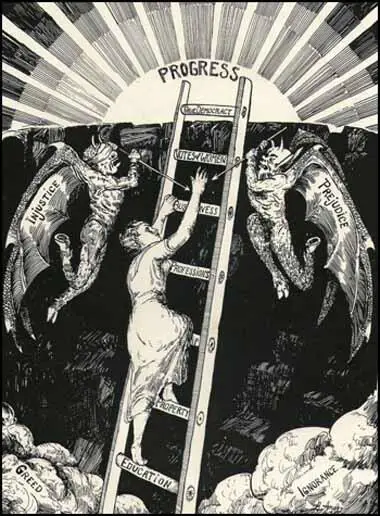
Primary Sources
(1) The New York Times (3rd March, 1969)
Mrs Blanche Ames, an artist and a champion of women's rights, died here yesterday at her estate. She was 91 years old.
Her son-in-law, Francis T. P. Plimpton said the family had understood Mrs Ames to have been the first public exponent of birth control in Massachusetts. She argued it was a woman's right to limit her family and she became co-founder and president of the Massachusetts Birth Control League.
Later she became President of the New England Women's Hospital and, in a day when women physicians were a subject of controversy, she fought to have the hospital staffed "entirely by women doctors," Mr. Plimpton said.
Her husband, Arnold Professor of Botany at Harvard amassed a collection of more than 64,000 specimens of orchids and presented it to the university in 1941. In trips into the jungles of South America he found more than 1,000 new species. Mrs Ames's pen-and-ink drawings illustrated her husband's books and papers on orchids.
(2) Roy R. Behrens, The Artistic and Scientific Collaboration of Blanche Ames Ames and Adelbert Ames II (1998)
The Blanche Ames became Blanche Ames Ames by her marriage in 1900 to Oakes Ames (1874-1950) (of an unrelated family), a Harvard botanist and an authority on orchids. Her brother Adelbert was commonly known as Del Ames. The fourth and fifth, respectively, of six children, Blanche and Del bore the same given names as their parents, who were distinguished and affluent residents of Lowell, Massachusetts
Their father was General Adelbert Ames, a West Point graduate and Civil War hero who received the Congressional Medal of Honor at the First Battle of Bull Run and, following the war, served as a U.S. Senator and Governor of Mississippi during the Reconstruction. Their mother was Blanche Butler, who was the daughter of Sarah Hildreth, a Shakespearean actress, and General Benjamin F. Butler, one of the most out-spoken and controversial figures of the U.S. Civil War. General Butler also later served as the Governor of Massachusetts and as a member of the U.S. House of Representatives and was an unsuccessful presidential candidate.
Blanche Ames Ames's lifelong interest in the rights of women may have been partly inspired by the example of General Butler, who, in 1871, was one of the first American politicians to support women's suffrage. In addition, both her parents were advocates of mutual regard between men and women - so much so that, while promising to love and honor each other in their wedding vows, they deleted the traditional pledge of the bride to obey.
The fascination of the Ames children with visual art may also have resulted from the example of their parents. As a young man, while sailing on his father's ships, General Ames had dabbled in watercolor painting; Blanche Butler Ames, who had studied painting at a convent school in Washington, D.C., was an occasional oil painter.
It is indicative of her parents' progressive attitudes that Blanche Ames Ames was one of the few women of her generation to attend college. In 1895, she enrolled at Smith College, where 4 years later she received a bachelor's degree in art history and a diploma in studio art from the Smith Art School. As class president, she delivered a commencement speech in which she observed that the graduates were "most fortunate to live in an age that - more than any other - makes it possible for women to attain the best and truest development in life"
One year later, she married Oakes Ames, whose family was known for its pivotal role in financing the Union Pacific Railroad, ownership of the lucrative Ames Shovel Company and patronage of the well-known architect H. H. Richardson. While Blanche's young husband was supportive of the concept of equality for women, his mother was less sympathetic at first. An aristocratic matriarch whose late husband had been Governor of Massachusetts, she could not bear to have her son move out of the family mansion. As a result, in what must have been painfully difficult days for an enlightened young woman, the newlyweds lived with Oakes's mother in North Easton for the first 6 years of their marriage.
During this period, the couple had two children. Several years later, after having finally moved to a home of their own, they had two more children. Their oldest child, a daughter named Pauline, became the mother of American writer George Plimpton. The home the young family moved to was a large farmhouse on 1,200 acres of tillable land, woods and ponds, 4 miles west of North Easton.
(3) Heather Miller, Blanche Ames (2021)
Born in Lowell, Massachusetts to a prominent family, Blanche Ames was one of six children. Her father, who had been a general in the Civil War and a U.S. Senator and governor of Mississippi, and her mother took an active role in their children's education. Blanche enjoyed an athletic childhood in which she learned golf, tennis, football and sailing.
At Smith College, Ames was class president and pursued diplomas from both the College and the School of Art, earning an A.B. in 1899. One year later, she married Oakes Ames (unrelated), an instructor in botany at Harvard. Their marriage was a highly successful collaboration in home and family building, art, science, technology and politics.
Between the years 1900 and 1910, they had four children. In 1910, they designed and constructed an impressive stone mansion located in North Easton, Massachusetts. The house was surrounded by 1500 acres called Borderland which the family farmed. The Ames resided at Borderland for the rest of their lives. They were Unitarians who belonged to the Unity Church of North Easton, whose building was designed by John Ames Mitchell. Today Borderland is a State Park.
Blanche established an art studio on the third floor of Borderland for her many artistic projects, which ranged from oil paintings of prominent men and women, to her illustrations of orchids for her husband's scholarly works to political cartoons.
As an artist, Ames is known for her drawings of orchids, which she produced over a period of 50 years to accompany her husband's groundbreaking scholarly work in orchidology. Little was known about the Orchidicae, one of the largest plant families, before Oakes Ames' thorough study and classification of them. In search of further identification and knowledge of orchids, Blanche travelled with her husband on expeditions to Florida, the Caribbean, the Philippines and Central and South America. Thanks to his scholarship and thousands of her minutely observed drawings, the Orchidicae is now the best researched and classified of all the large plant families. The Ames' cumulative work was published in the seven-volume Orchidicae: Illustrations and Studies of the Family Orchidicae. The couple also jointly developed the Ames Charts, using watercolors to illustrate the phylogenetic relationships of the major plants useful to humans. The chart is used to this day.
When the ban on dissemination of birth control information was upheld, Ames reacted by suggesting that women take the matter into their own hands. She encouraged mothers to teach birth control methods to their daughters. To help them, she created formulas for spermicidal jellies and provided instructions on how to make a diaphragm by using such everyday objects as a baby's teething ring.
Ames' involvement with the Birth Control League of Massachusetts came to an end, however, when she quit in outrage at a fundraising advertisement for the league. In the advertisement, the League used the fact that 250,000 babies had been born that year to families on welfare to persuade taxpayers to support birth control.
Blanche Ames Ames was well known as a witty pro-suffrage political cartoonist. In all of her political endeavors, she was actively supported by her husband.
Ames' imagination extended to inventions and engineering. She designed and engineered the dams and ponds throughout the 1250 acre Borderland estate. During World War II, she invented and received the patent for a method of trapping the propellers of enemy airplanes using strings held by balloons.
Blanche's daughter Pauline Ames explained her mother's productivity by stating, "For her to have an idea was to act." Blanche Ames lived for nineteen years after her husband's death before succumbing to a stroke at her home, Borderland, at the age of 92.
(4) John H. Lienhard, Blanche Ames (2003)
Blanche Ames was born in Lowell, Massachusetts, in 1878. Her father fought with the Union Army and later became governor of Mississippi. If that seems contradictory -- well, stay with me.
The year after she graduated from Smith College, Blanche married Oakes Ames (same surname, but no kin). Oakes was a Harvard botany instructor from the family of the Ames Shovel Company. All her life, Blanche was a passionately political Republican. And she strongly pressed such women's causes as suffrage and birth control.
She was also a serious inventor. When the Catholic Church managed to ban the dissemination of birth-control information, she wrote pamphlets for home use. They included several birth-control means that she'd invented. (She had four children, by the way.)
Today, the centerpiece of Borderland State Park in Easton, Massachusetts, is the Ames mansion (perhaps "castle" would be a better word). Blanche designed it. She and Oakes contracted to have the mansion built according to a number of unusually difficult design conditions. They grew frustrated as the architect kept failing to meet their requirements. Blanche finally dumped him and hired a cement company that would build to her specifications.
Blanche Ames was an artist first. She did everything from oil portraits to political cartoons. But she's best known as an illustrator of orchids. She illustrated all her husband's studies of orchids, including his great seven-volume treatise on the subject.
And yet, beyond her vast competence ran a freewheeling inventive intensity that went where it chose to go. For example, she designed the water-control system of dams and weirs on the 1,250-acre Borderland Estate. During WW-II, she patented a new kind of fabric wire to dangle from barrage balloons and trap enemy airplanes.
She developed a new system for mixing the colors of paints; she worked on the creation of a disease-resistant turkey; she invented a machine for cutting hexagonal wooden members.
All the time, she pursued her strict conservative politics while she aggressively fought for women's rights. She quit the Birth Control League of Massachusetts (which she'd founded) after they began linking birth control with welfare.
When she was eighty, JFK's book, Profiles in Courage, really got her dander up. She felt that Kennedy had portrayed her father as a carpetbagger. In her father's defense, she wrote a book -- his biography. But she wasn't done yet. She died at the age of almost 92, in 1969. A scant two years earlier, she'd received her last patent, this one for an antipollution toilet.
How to explain such unrelenting creative energy? Her daughter captured her mother in a fine epigram: "For her to have an idea was to act." And that calls to mind Henry Adams' remark that his old friend Teddy Roosevelt "showed the singular primitive quality that belongs to ultimate matter .... He was pure act." Well, Blanche Ames was surely cut from that same bolt of cloth.
(5) Laura J. Snyder, Harvard Magazine (July-August 2017)
Blanche Ames and her husband, Oakes Ames, professor of botany at Harvard and director of the Arnold Arboretum, were in the middle of the Yucatan jungle when their car stalled. As Oakes and the driver stood by helplessly, Blanche pulled a hairpin from her chignon, extracted a bullet from her revolver, and set to repairing the carburetor. She started the car - to this day, no one knows how - and the expedition continued.
The intrepid mechanic, daughter of one Civil War general and granddaughter of another, had graduated as president of her class at Smith College in 1899 with a degree in art history, a diploma from the art school, and the dream of becoming a professional artist. ("My ambition is soaring on the art line," she told her parents. "You see I am puffed up and my fancies take wild flights.") When she met Oakes Ames, A.B. 1898 - no relation, but a friend of her brother's - he began courting her with gifts of "the queerest orchids," as she described them to her mother. After they became engaged, he presented her with a microscope so that she could examine and draw the botanical specimens he collected.
Blanche Ames was soon renowned as the foremost American botanical illustrator of the age. Using the microscope and another optical device, a camera lucida, she captured the intricate form of orchids: the delicate root hairs and rhizomes, the anther cap perched over the pollen bundles, the succulent pseudobulbs. Thanks to dark shadowing and crosshatch highlights, her elegant pen-and-ink drawings boldly depict the plants against the white page. They are at once scientifically exact and artistically brilliant.
Blanche illustrated all seven volumes of Oakes's seminal work Orchidaceae: Illustrations and Studies of the Family Orchidaceae (1901-1922). The orchid family had been considered a crucial case study of the theory of evolution by natural selection ever since Charles Darwin published his Fertilization of Orchids in 1862, speculating that orchids and their pollinators had adapted to each other or "co-evolved." But research on orchids was hampered by pervasive confusion over the proper way to classify them. Oakes undertook a comprehensive overhaul. By the end of his life he had become the most celebrated orchidologist in the world.
Blanche shares the credit for placing orchid study on a firm scientific foundation, and not only for her incredibly precise drawings. During their 50-year marriage, she was more than an illustrator; she was her husband's co-investigator, and he justly referred to her as his "colleague": they traveled together to the Caribbean, the Philippines, and Central and South America in search of specimens. Oakes is acknowledged as the discoverer of more than 1,000 new species. Many of these he found side-by-side with Blanche.
Once, in Rio de Janeiro, Oakes learned of a Brazilian orchid that had been discovered decades earlier and sent abroad to the foremost authority on the area's orchids. The specimen was lost en route; its only ghost was a watercolor drawing that had been made before it was sent. Because the drawing did not show enough detail to classify the orchid, and no further specimens had been found, the species remained in a kind of scientific limbo. Returning later from an expedition to Brazil's Mount Itatiaia, Oakes and Blanche found a large fallen tree blocking their path. Growing on that tree was a single orchid - incredibly, it was a specimen of the lost species. Blanche, not Oakes, was given the discoverer's honor of the taxonomic name: Loefgrenianthus blanche-amesiae.
Oakes's remarkable herbarium, now part of the Harvard University Herbaria, was another joint effort. Most of the sheets include plants dried and pressed by Blanche, as well as her sketches and watercolors of the living specimens, together with Oakes's notes, photographs, and journal clippings. Comprising thousands of pages, the herbarium remains a valuable resource for botanists - especially the copies Blanche made, during a visit to Berlin in 1922, of the herbaria sheets of Rudolf Schlechter and Rudolf Mansfeld of the Berlin-Dahlem Herbarium. When the originals were destroyed during the bombing of the city during World War II, Blanche's copies became the only remaining documentation of some species these botanists had discovered.
Many research papers published in the Harvard series Botanical Museum Leaflets were also graced by her drawings. She supplied the orchid illustrations for the first posthumous edition of the Manual of the Botany of the Northern United States by Harvard professor Asa Gray, the foremost American botanist and Darwinist of the nineteenth century, and illustrated the books of other botanists as well. The American Orchid Society commissioned her to design its medallion (above): a Native American, modeled on her son Oliver, gazing upon a branch of orchid blossoms. Today, her motif adorns the seal of the society as well as its gold medal of achievement, which was first awarded in 1924 - to Blanche and Oakes Ames.
A woman of many talents, Blanche Ames was also a sought-after portrait painter, an inventor who held four patents, and a political activist engaged in the struggle for women's suffrage and birth-control rights. But her greatest impact was upon the scientific study of orchids, a field still considered central to the study of evolution, especially for investigations of species interactions. Her botanical illustrations exquisitely embody Darwin's view of orchids and their parts as "multiform and truly wonderful and beautiful."
(6) Erin Trahan, Blanche Ames (20th February, 2020)
An afternoon in North Easton's Borderland State Park might include a woodsy hike, a paddle on one of six ponds, or a tour of the mansion that served as the centerpiece for 2019's hit murder mystery, "Knives Out."
Yet until recently, many of the astonishing accomplishments of the estate's architect and former matriarch, Blanche Ames Ames, were left to the archives.
It turns out Ames was a pivotal strategist for women's suffrage, an effective political cartoonist, a foremother of the women's reproductive rights movement, an inventor, gifted painter and illustrator, and so much more.
In a new documentary set to premiere at Stonehill College on Saturday, one of her granddaughters remarks that Ames conveyed mastery and authority in everything she undertook. Yet her 1969 New York Times obituary headline obscures her prominence, reading "Mrs. Oakes Ames Botanist's Widow" with the subhead, "Illustrator of Her Husband's Works on Orchids Dies."
Two years ago one of Ames' relatives approached documentary filmmaker Kevin Friend to consider making a film about Borderland. Friend grew up in Sharon and lives in Easton. He'd been aware of the park his whole life, however, he says, "What I was not aware of was Blanche." Friend says at first he envisioned a story in equal measure about Ames and her husband, the famed Harvard orchid expert (also an Ames but no relation). Then after a little research, he says, "I was immediately fascinated by this woman."
In one of her most audacious moves, Ames, who was born in 1878, carved a wooden penis, then trotted it out on Commonwealth Avenue to demonstrate proper condom use. Authorities arrested her only to discover she was the daughter of a governor. This anecdote and others relayed in the first five minutes of "Borderland: The Life & Times of Blanche Ames Ames" sets a swoon-worthy tone for audiences hungry for dynamic women role models. For the remaining 45 or so minutes Blanche Ames Ames never disappoints.
Told with an abundance of archival family photographs as well as through documents held at Smith College (where Ames served as president of her 1899 senior class), "Borderland" sketches out her distinguished family lineage. War generals come from both sides. She had a Shakespearean actress grandmother. Her father Adelbert Ames served as a Reconstructionist Mississippi senator, then governor, before the family moved to Lowell. Her mother Blanche Butler Ames wrote extensively, a lifetime of letters published into a book.
Many film narratives would've shifted gears directly from college to Ames' marriage into a family with similar or more influence. Her husband, Oakes Ames, was the son of a Massachusetts governor and inheritor of railroad money. But "Borderland" sensibly pauses on the couple's rocky early years when they lived with her husband's mother; the independent-minded Ames and her Victorian mother-in-law clashed. Ames also found the inequities of child rearing highly problematic. She criticized her husband's inaction and wrote to her mother that "marriage has added to my burdens."
"Borderland's" writer and narrator Kate Klise surmises that building and moving into Borderland "saved their marriage." Acknowledging this likelihood allows for a rarely seen story about a couple that prospers while also advocating for women's rights. Oakes publicly champions women's suffrage alongside his wife and she illustrates his books on orchids. "He definitely stood by Blanche," says Friend.
All of this makes Ames' struggles more relatable to Klise. "She feels so contemporary, everything she was fighting for, it's where we are today still," she says. The author of more than 30 children's books, Klise fell for Ames while researching her life during writer-in-residence terms at Queset house, part of the Ames Free Library. Friend says that's why he approached her to help with production and draft the film's script.
While mobilizing on behalf of women's suffrage, to the point where she helped un-seat U.S. Senator John Weeks in 1919, Ames also started voicing support for access to birth control (something that would not become legally available in Massachusetts until 1966). She devised a form of a diaphragm, among other inventions, and served 19 years as Birth Control League of Massachusetts' president. The film categorizes her as more progressive than Margaret Sanger.
Klise points out that when people think of birth control they probably think of Sanger. And only Sanger. When they think of suffrage it's Elizabeth Cady Stanton. "People can recall many sports names, or all the characters on 'Friends,' but we can't name six women suffragists? We have to do better," she implores. This frustrates her because then people may "feel like [all we need is] one hero to come along and lead the way."
(7) Holly Bass, Artful Advocacy: Cartoons from the Woman Suffrage Movement (1st September, 1995)
The women's suffrage movement had a serious image problem at the turn of the century, when female activists were often portrayed as obsessed feminists out to destroy American society. From 1912-15, three women artists - Annie Lucasta "Lou" Rogers, Nina Allender, and Blanche Ames - helped turn things around with political cartoons that were sharp, witty attacks on the powers that be. These works also stand as some of the first realistic representations of the "new woman" in the popular media. The majority of the 21 works in "Artful Advocacy: Cartoons From the Woman Suffrage Movement" are by Rogers, whose smart, irreverent humor has an edge even by today's standards. "Fitting a Square Peg Into a Round Hole," for instance, depicts a group of men unsuccessfully pulling a cubical woman into a circle representing the "woman's sphere" - an act of suppression that is still all too common. At the National Museum of Women in the Arts, 1250 New York Ave. NW.
(8) Anna Diamond, New York Times (14 August 2020)
When Alice Paul recruited a cartoonist for her newspaper The Suffragist in 1914, the idea of that activist was already sketched in the public mind and it was not pretty. Throughout the 19th century and into the 20th, Americans had encountered countless images showing women suffragists as old, mannish and unattractive. In pursuing the vote, women were portrayed as threatening national values, the sanctity of the home and their husbands' masculinity.
It was impossible to miss such representations. Whether in newspapers, on posters or on buildings around town, "all Americans encountered cartoons," according to Allison K. Lange, author of Picturing Political Power: Images in the Women's Suffrage Movement.
Suffragist artists fought back on a black-and-white battlefield, developing imagery to subvert negative portrayals. In the 1910s, these cartoons were key to America's reimagining who a suffragist was and to winning sympathy for the cause.
Paul enlisted Nina Allender, an artist and women's rights activist, to shape the image of a charming and energetic suffragist for the Congressional Union for Woman Suffrage (a precursor to the National Woman's Party, or N.W.P.). It was important that the Allender Girl be created in a style that was widely recognizable, according to the historian Rebecca McCarron.
Following in the illustrated tradition of the independent "New Woman" and the era's iconic Gibson and Brinkley Girls, she was a stylish ideal of educated, youthful femininity and middle-class respectability. That was essential to offsetting the N.W.P.'s more militant strategies, like picketing the White House and holding hunger strikes in jail.
Other images, like those distributed by the National American Woman Suffrage Association, rebutted claims that women's voting rights endangered the home. Rose O'Neill, creator of the popular cherubic Kewpie babies, sent her characters marching under banners demanding "Votes for Our Mothers." Cartoons by artists like O'Neill, Blanche Ames Ames and Mary Ellen Sigsbee argued that women needed the vote precisely because they were caring and virtuous mothers, Lange said.
Annie Lucasta Rogers, who adopted the androgynous name Lou Rogers to advance her career, was a member of the radical feminist club Heterodoxy. (Her depiction of a woman tearing off the bonds of disenfranchisement strongly influenced the imagery of Wonder Woman, according to Jill Lepore's book "The Secret History of Wonder Woman.") She explained in a 1913 interview that her cartoons were "a chance to help women see their own problems, help bring out the things that are true in the traditions that have bound them; help show up the things that are false."
Whether the images featured girlish, maternal or symbolic figures, the protagonists, and the artists who drew them, were white. Though there were many women of color who were passionate suffragists, their absence in the cartoons spoke to a larger strategy adopted by many reformers to appease white supremacist politicians and suffragists and obscure the contributions of women who were not white.
The National Association of Colored Women produced portraits of leaders like Mary Church Terrell, but, Lange said, they lacked the same resources and infrastructure to widely shape their public image. One rare example - perhaps the only one - of a cartoon in support of Black women's suffrage was printed in the National Association for the Advancement of Colored People's publication The Crisis with the title "Woman to the Rescue!" It shows a Black mother protecting her children against birds of prey representing Jim Crow and segregation.
Soon after the Allender Girl celebrated her hard-won victory in The Suffragist, her creator moved on to Paul's next pursuit - the passage of the Equal Rights Amendment, in the pages of the N.W.P.'s new magazine, Equal Rights. But 100 years later, American women are still at that drawing board.
(9) Caitlyn Joyce, Blanche Ames: A Pioneer in the Women's Suffrage Movement (2017)
Blanche stood up for what she believed in. In a world dominated by males, women were meant to be silent. She took a stand, breaking the silence. She did not believe in total power for men, and she did not hide this opinion. While many opposed her, creating political cartoons to combat hers, she held strong, keeping her determination. In every aspect of her life, Blanche was a fighter, determined to get things done. Even when she was eighty years old, and most women her age were sitting down for tea, she became outraged at articles written about her father calling him a carpetbagger, and worse. One of these articles was written by arguably the most powerful man in the world at the time... President John F. Kennedy. She set pen to paper in a fury and wrote a book that told of the courageous acts that she truly believed showed her ancestor's character. Now that you have a taste of what Blanche could do, with her opposing not only anti-suffragists, but our Presidents, I will tell you the real reason she was a leader who deserves to be honored in history.
Blanche was a leader. She used her art for women's politics. In 1915, Blanche joined the Woman's Journal as Art Editor. This was the beginning of her art in politics. She began to draw of her visions for the world, she took her emotions of how gender inequality saddened her, and turned them into art....
Progress was a buzzword in the early 1900's. This is why many of Blanche's cartoons were centered around the word. Progress got everyone thinking about the future: where they wanted the world to go, what they wanted to happen, and how they could make it happen. This is the goal of the woman climbing the ladder in the cartoon "The Next Rung". The woman is being pushed down by two demons that are trying to keep her from reaching the top of the ladder, and true progress. The demons - Injustice and Prejudice - are just some of the troubles that this woman has to overcome to get the right to vote. You can see that Injustice is blind-folded, showing how Blanche felt that injustice is blind, it only sees half of the story. Blanche's cartoons were drawn to make you think... what does this make you think of? I think of hardship and the courage to overcome them. This woman has already overcome so much greed and ignorance, but now she faces more challenges. She is using her education to help her, but she is still a long way away from the top rung, and must keep climbing. She has come too far to turn back now. This was Blanche's message, this was her hope, and thanks to determined suffragists like Blanche and her contemporaries, women now have a vote, now have true democracy.

